
By
Nana Terra
December 8, 2020
Updated
January 23, 2025
Fossil fuels were the energy source that dominated the 20th century, but green electricity will power the 21st century. It seems to be what Canada believes.
Canada is one of the world leaders in the production and use of renewable power, such as hydro, wind, solar, and biomass energy. Beyond that, Canada also has a significant development in marine and geothermal energy. Today, renewable energy sources provide about 16% of the total primary energy supply in the country.
The most important renewable power source is water, providing more than 60% of Canada’s electricity generation. But wind and solar are the fastest-growing sources of energy.
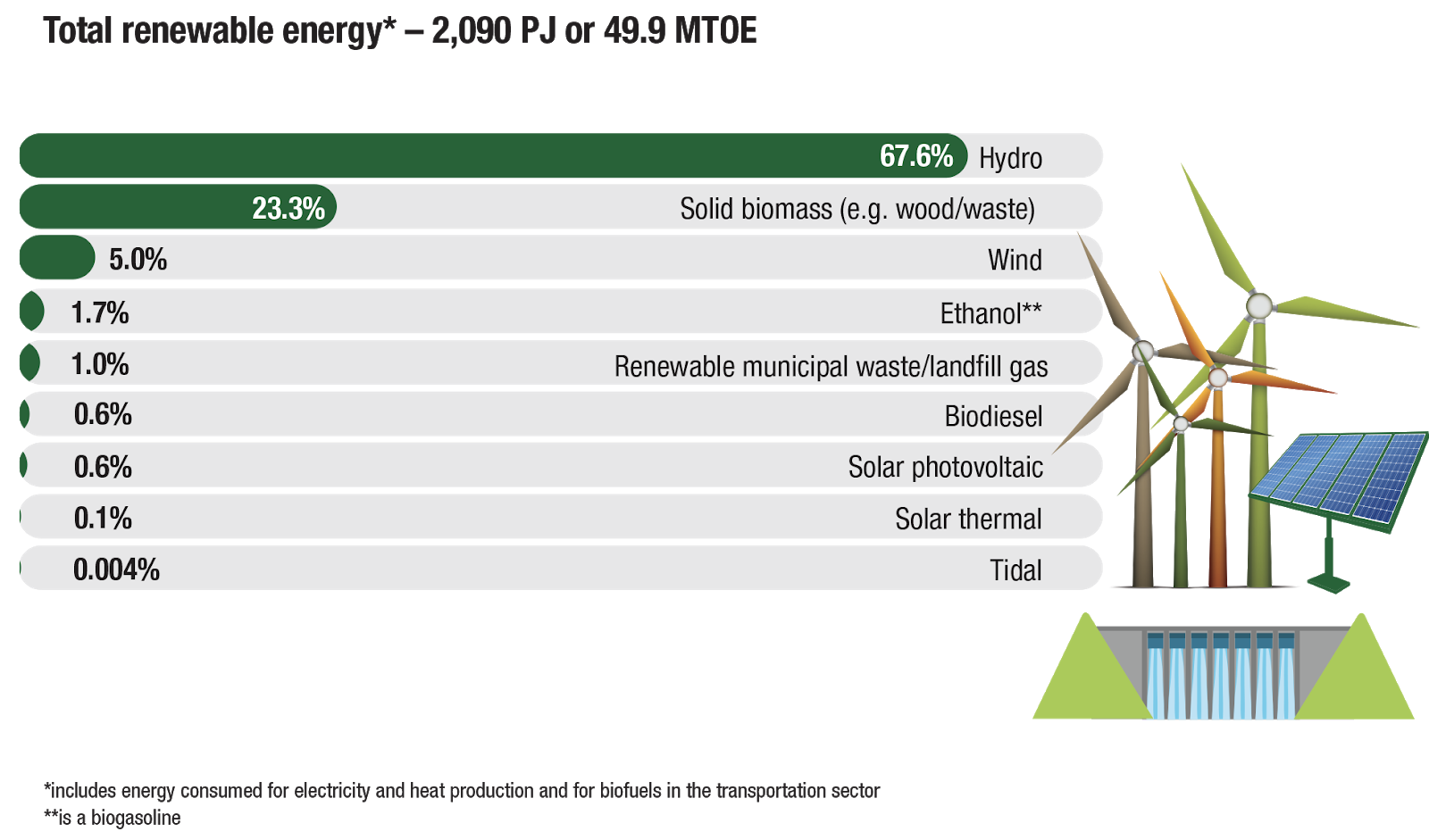
Figure 1: Energy generated - Total renewable energy production in 2018. Source: Renewable energy resources - Government of Canada
Canada’s hiring trends for renewable energy projects
In 2019, roughly 18.7 million people were working in Canada, of which, about 620,100 (3.3%) were environmental employees.
According to an Environmental Labour Demand Outlook, this sector will grow 8% by 2029 in Canada. The document highlighted that environmental roles are present in every region and occupation, offering a broad range of job opportunities.
Here you can see the highlights of the Environmental Labour Demand Outlook:
- The combination of new jobs and the environmental replacement demand may contribute as many as 233,500 job openings by 2029. Close to 30% of the current workforce is poised to retire within the next decade.
- The demand for environmental workers will impact every region and every occupation.
- Related labour and skills shortages can be addressed to meet the demand in a sustainable way.
Environmental regulations and investment have intensified over the last decade. These changes have contributed to the large growth of green jobs. Canada is committed to a low-carbon future by investing in clean technologies and increasing energy efficiency. The nation's rightness is linked to sustainable economic growth.
The renewable energy market in Canada
The 2019 Federal Government Budget indicates that US$14.8 billion was spent on infrastructure projects with a focus on:
- Reducing greenhouse gas emissions;
- Delivering clean air;
- Safe water systems;
- Promoting renewable power plants.
Energy efficiency has increased by 31% in Canada since 1990. And in 2016 these improvements saved Canadians $45 billion.
Most used renewable energy sources in the world
Renewable energy sources will account for more than half of global electricity production by 2035. Based on global installed power generation capacities, the top five renewable energy sources are hydropower, wind energy, solar power, bio-power, and geothermal power.
Hydropower in Canada
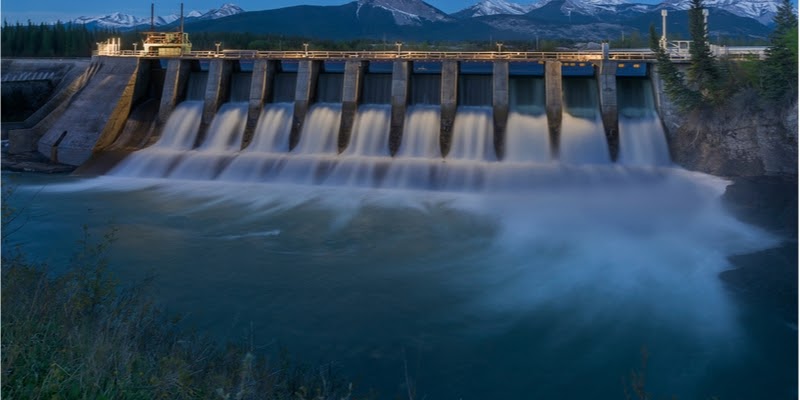
Source: James Gabbert/Shutterstock
In Canada, hydropower represents 61% of total electricity generation. Waterpower is the most abundant source of clean and renewable electricity in Canada.
Beyond the 500 facilities, 81,000 MW of installed capacity, and 130,000 jobs supported by the sector, Canada has the potential to more than double its current capacity. It could help meet growing North American power generation demand.
Canadian hydropower and pumped storage projects
- Site C in British Columbia
- Muskrat Falls in Newfoundland and Labrador
- La Romaine Complex Unit 4
- Canyon Creek Project
- Moon Lake Pumped Storage Hydro Project
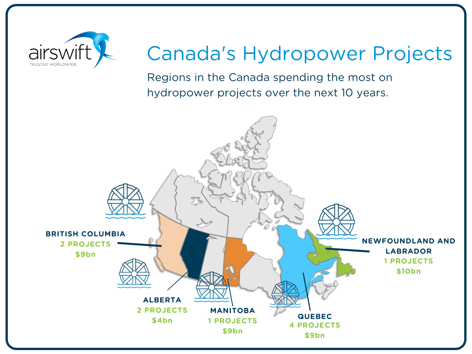
Site C Clean Energy Project
Site C will be a third dam and hydroelectric generating station on the Peace River, in northeast British Columbia.
The project will provide 1,100MW of capacity, and produce 5,100GWh of electricity each year. It is enough energy to power 450,000 homes per year in British Columbia.
Managed by BC Hydro, the project has an estimated investment of $8,5bn and will create 13,000 direct employment during construction. The construction started in summer 2015 and the project will be operating in 2025.
Once built, it will provide clean electricity to British Columbia for over 100 years.
Muskrat Falls Project
The Muskrat Falls Project is a construction of an 824MW facility, over 1,600 km of transmission lines across Newfoundland and Labrador Province. It consists of two sites at Muskrat Falls and Gull Island. They will have a combined capacity of over 3,000MW.
Operated by Nalcor Energy, the project has an estimated investment of $9,6bn. The lower Churchill River is one of the most attractive hydro’s resources in North America. It is strategic and a key component of the province’s energy portfolio.
The project will be in service in August 2021.
La Romaine Complex Unit 4 in Quebec
The project is a 1,550MW hydroelectric complex on the Rivière Romaine, north of the Havre-Saint-Pierre, on the north shore of the St. Lawrence. The complex will consist of four hydropower plants with average annual output of 8.0TWh.
The Romaine project will generate large economic spinoffs, approximately $3.5bn for Québec and $1.3bn for the Côte-Nord region. An average of 975 new jobs each year while the project is being carried out.
Managed by Hydro Quebec, the project has an estimated investment of $6,5bn and it will be operating in 2021.
Canyon Creek Project
Canyon Creek is a construction of a 75MW pumped hydro energy storage facility near Hinton, Alberta. The project is expandable to 400MW through future development.
The project consists of two small off-stream water reservoirs. One atop the hill by Obed mine and the other at the bottom not far from the Athabasca River. These two man-made lakes will be connected by a pipeline with pumps, turbines and generating equipment near the bottom reservoir in a powerhouse.
Operated by Turning Point Generation, the project has an estimated investment of $225 million. The project will be complete in 2022.
Moon Lake Pumped Storage Hydro Project
This is a reversible hydroelectric facility where water is pumped uphill into a reservoir. When needed, the water flowing back down the hill is harnessed to produce electricity in the same way as a conventional hydro plant.
Advantages of the project:
- Adds capacity to meet demand during the winter and in emergencies.
- Provides a way to store excess renewable electricity in the summer to decrease dependency on fossil fuels during the winter.
The estimated investment of the company operator (Manitoba’s Hydro) is $8,7bn and it is expected to be operating in 2021. It will need a vast workforce of 2,500 trades, support services, and professionals.
Solar energy in Canada
By 2050, solar energy will be the world’s largest source of electricity. With this in mind, Canada created a program called Solar Now, which will provide solar systems on public sites in communities across Western Canada
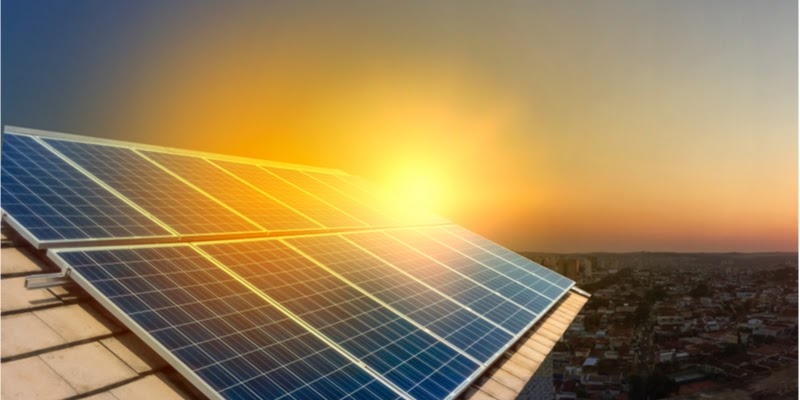
The goal is to offer the solar technologies in municipal buildings, schools, libraries, and community centres, engaging Canadians in the global shift to renewable energy.
2 Canadian solar projects are slated to start in the coming years
Are you interested in US solar energy? Read our blog 5 US solar energy projects starting in 2021
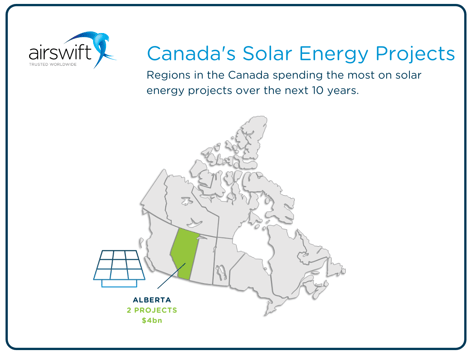
Saamis Solar Project
Saamis Solar is a project in the north-eastern industrial sector, under development on a 1000-acre brownfield site in the Medicine Hat, in Alberta Province. This city has a special solar radiation and boasts more days of sunshine per year than any other place in Canada.
A proposed 300MW solar photovoltaic project is in the planning process. Operated by DP Energy, the project has an estimated investment of $450 million. The expectation is to begin operating in 2022.
Travers Solar Project
Travers will be Canada’s largest solar facility producing 400MW in Vulcan County. Called the sunshine state of the north, Alberta is on the rise in generating electricity from renewable energy.
The company operator is Greengate Power Corporation, and the project has an estimated investment of $376 million. The schedule expects to begin operating in December 2021.
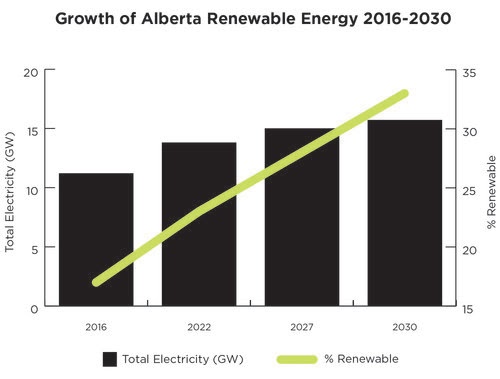
Source: Alberta Electric System Operator
Wind energy in Canada
With installations of 60.4GW, 2019 was a big year for the global wind industry. It was the second-largest year in history and close to the bumper year of 2015 (63.8GW)
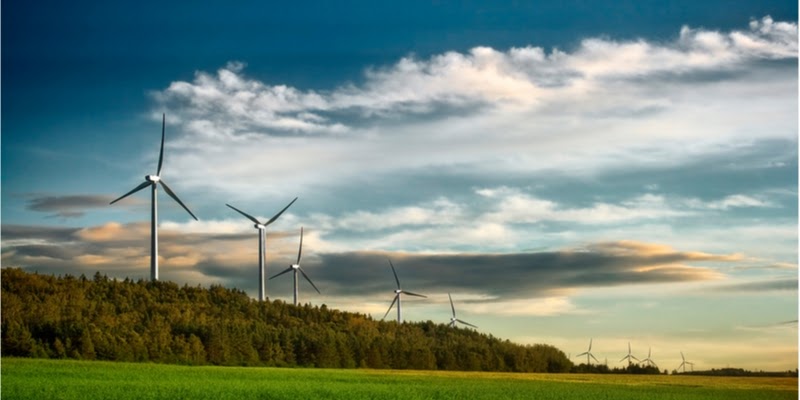
Electricity from wind
- In the onshore market, 54.2GW was installed, an increase of 17 percent compared to 2018.
- For the global offshore wind industry, 2019 was the best year ever with more than 6.1 GW new installations.
3 Canadian wind projects slated to start in the next few years
Are you interested in US wind energy? Read our blog 5 US wind energy projects starting in 2021
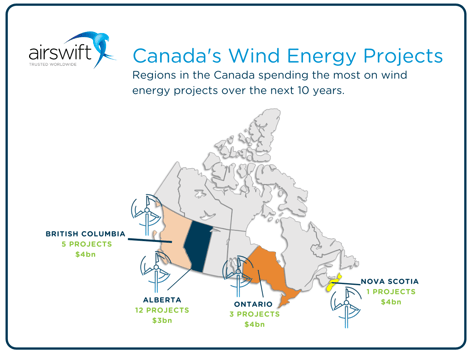
Sharp Hills Onshore Wind Farm
This wind farm will have an installed capacity of up to 300MW, in Special Areas 3 and 4 near the Sedalia and New Bridgen Hamlets, in Alberta. The wind-generated is enough to power about 160,000 average Alberta Province homes.
The project will support around 300 construction jobs and create up to 15 to 20 permanent local jobs during the project’s life. Operated by EDP Renewables, the wind farm comprises 71 Enercon E138 4.2MW wind turbines.
The power generated by the project will be transmitted to the 240 kV ATCO transmission line and will also include a new substation, Sedalia 363S.
Around 50 supportive families representing 47,000 acres take part in the project. Clean and usable energy will help the region grow. The annual carbon offset of Sharp Hills Wind Farm is equal to taking more than 175,000 cars off the road.
Wild Rose Onshore Wind Farm
Operated by NaturEner, this project will have an installed capacity of up to 409MW, in Alberta. The construction happens in two phases: Wind Rose 1 and Wind Rose 2.
Wild Rose 1 is a construction of a 217.6 MW wind power project with 70 Alstom ECO110 3MW turbines, access roads, and underground interconnections.
Wild Rose 2 is a construction of a 192MW wind power project with 63 Alstom ECO110 3MW turbines.
With an investment of $630 million, Wild Rose Onshore Wind Farm is in the development stage and is expected to start in 2022.
Yarmouth Offshore Wind Farm
This project is a 1GW offshore wind farm 20km off the coast of Yarmouth, Nova Scotia, with a depth range of 44m-60m and 10m/s wind resource.
Yarmouth Offshore Wind Farm will export power to New England. It will be done via the Can-Am link, which is a 322km subsea cable to the United States.
With an investment of $4bn and more than 120 turbines, the project is in the planning process. The expectation is to start operating in 2025.
The turbines will sit on a gravity base in shallow waters of less than 30m. It will be outside major shipping lanes and commercial fishing grounds and will be built in phases. The company operator is Beothuk Energy.
We can help you hire for renewable energy projects
Airswift is committed to the energy transition. That is the reason why we are the agency of choice for world-leading renewable energy businesses.
With over 60 offices worldwide, 1,000 employees, and 9,000 contractors, we help companies of all sizes find the talent they need and help candidates find the best opportunities.
From our offices in Calgary, St. John's, Halifax and London, we connect Canadian and international talent to the biggest energy projects. We have over 40 years of experience servicing the energy, process, and infrastructure industries.
Our local renewable energy recruiters are already working with many of the key companies in this space and are available to consult with any clients, hiring managers, and candidates. We are also working with many candidates from other engineering sectors who want to transition into Renewables.
So if you are a renewable energy professional or think it is time for a career change direction and are looking for your next role in this sector, speak to Airswift.

Want to know more about clean energy recruitment and top green projects in Canada? Read also:
